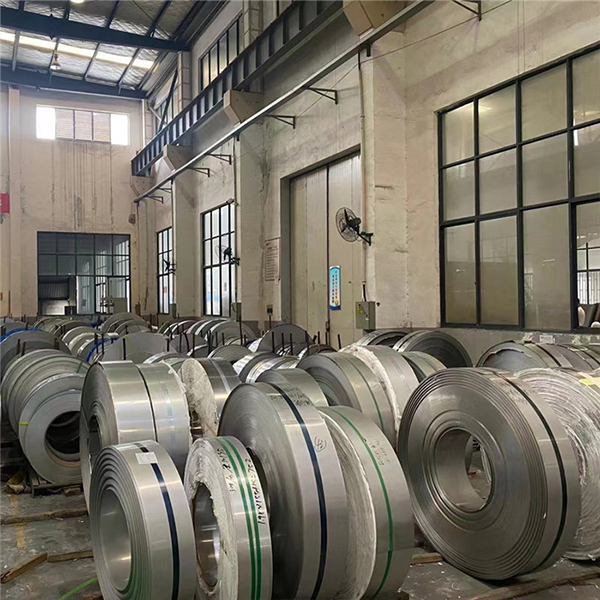316L Stainless Steel Strips Cold Rolled 0.7mm 0.8mm 1.0mm Thickness
Features
Alloy 316/316L is non-magnetic in the annealed condition, but can become slightly magnetic as a result of cold working or welding. It can be easily welded and processed by standard shop fabrication practices.
Chinese Standard (GB)-old grade: 00Cr17Ni14Mo2, new grade: 022Cr17Ni12Mo2, Japanese standard: SUS316L, American standard ASTM-316L, as a low-c series of 316 steel, in addition to the same characteristics as 316 steel, and 316l stainless steel strip's resistance to grain boundaries Excellent corrosiveness 316L steel is a product with special requirements for anti-grain boundary corrosion. Because of the addition of Mo, its corrosion resistance, atmospheric corrosion resistance and high temperature strength are particularly good, and it can be used under harsh conditions; 316l stainless steel strip has excellent work hardening (non-magnetic). Due to the addition of Mo, its corrosion resistance, atmospheric corrosion resistance and high temperature strength are particularly good, and it can be used under harsh conditions; it has excellent work hardening properties and is non-magnetic.
Chemical Composition (%)
| Element | Minimum percentage | Maximum percentage |
| C | – | 0.03 |
| Si | – | 1.0 |
| Mn | – | 2.0 |
| P | – | 0.045 |
| S | – | 0.03 |
| Cr | 16 | 18 |
| Mo | 2 | 3 |
| Ni | 10 | 14 |
Physical Properties
| Specific Heat | 0.11 BTU/lb-°F (32 – 212°F) 450 J/kg-°K (0 – 100°C) |
| Modulus of Elasticity | 29.0 x 106 psi 200 GPa |
| Thermal Conductivity 212°F (100°C) | 10.1 BTU/hr/ft2/ft/°F 14.6 W/m-°K |
| Melting Range | 2450 – 2630°F 1390 – 1440°C |
| Electrical Resistivity | 29.1 Microhm-in at 68°C 74 Microhm-cm at 20°C |
Properties
The corrosion resistance of 316L stainless steel strip is better than 304 stainless steel strip, and it has good corrosion resistance in the production process of pulp and paper industry. And 316L stainless steel strip is also resistant to the erosion of the ocean and corrosive industrial atmosphere.
In the intermittent application below 1600 degrees, 316 stainless steel strip has good oxidation resistance.
316L stainless steel strip has better resistance to carbide precipitation than normal 316 grade stainless steel strip.
The L in 316L stands for carbon content. 16L is a stainless steel material grade, AISI 316L is the corresponding American label, and sus 316L is the corresponding Japanese label. China's unified digital code is S31603, the standard brand is 022Cr17Ni12Mo2 (new standard), and the old brand is 00Cr17Ni14Mo2, which indicates that it mainly contains Cr, Ni and Mo, and the number indicates the approximate percentage.
L means ultra-low carbon, that is, the content of C is less than 0.03%.



-2.jpg)
-2-150x150.jpg)
-2-150x150.jpg)
-2-150x150.jpg)
-2-150x150.jpg)
-2-150x150.jpg)

-1.jpg)
-2.jpg)
-2.jpg)

.jpg)



